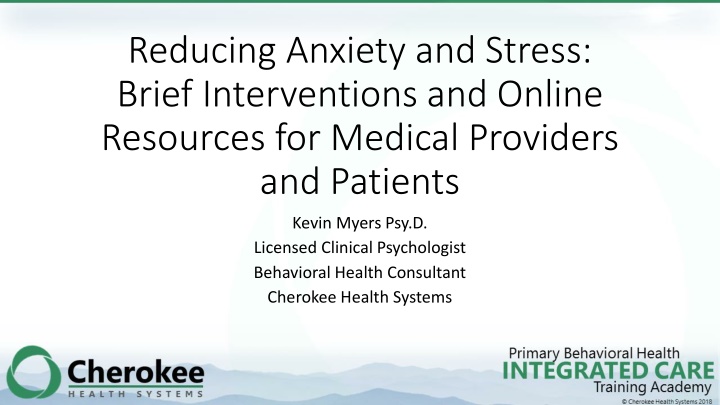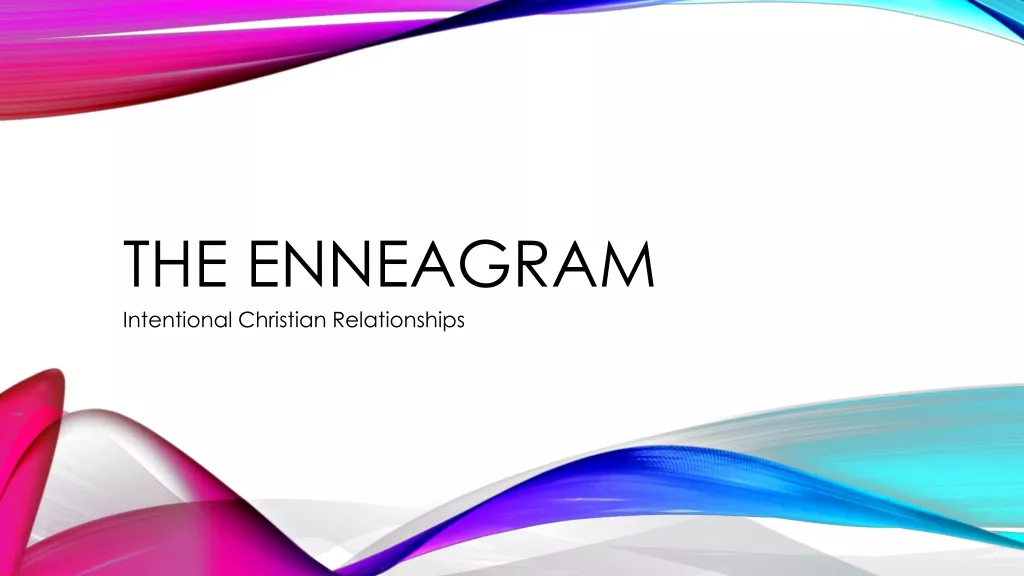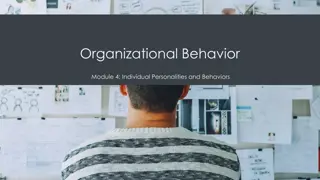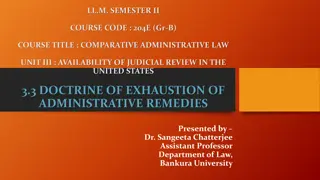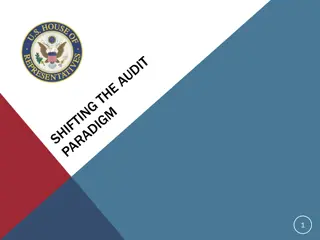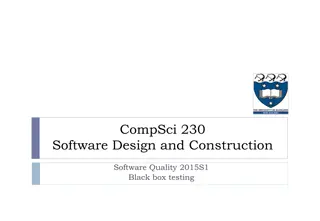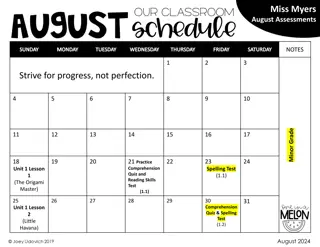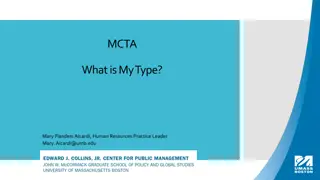Anxiety Disorders and Stress Management
Anxiety disorders, such as Generalized Anxiety Disorder and Panic Disorder, are common in medical settings and often coexist with various medical conditions. Patients with anxiety may also experience somatic symptoms like heart palpitations and sleep disturbances. The DSM-5 criteria for Generalized Anxiety Disorder include excessive worry and associated symptoms. Addressing anxiety and stress through interventions like behavioral treatments and online resources can help improve overall well-being.
Download Presentation

Please find below an Image/Link to download the presentation.
The content on the website is provided AS IS for your information and personal use only. It may not be sold, licensed, or shared on other websites without obtaining consent from the author.If you encounter any issues during the download, it is possible that the publisher has removed the file from their server.
You are allowed to download the files provided on this website for personal or commercial use, subject to the condition that they are used lawfully. All files are the property of their respective owners.
The content on the website is provided AS IS for your information and personal use only. It may not be sold, licensed, or shared on other websites without obtaining consent from the author.
E N D
Presentation Transcript
Reducing Anxiety and Stress: Brief Interventions and Online Resources for Medical Providers and Patients Kevin Myers Psy.D. Licensed Clinical Psychologist Behavioral Health Consultant Cherokee Health Systems
Anxiety in Medical Health Care An estimated 20% of patients in primary care meet criteria for either Generalized Anxiety Disorder, Panic Disorder, Social Anxiety Disorder, or Posttraumatic Stress Disorder Anxiety disorders are commonly associated with multiple medical concerns including irritable bowel syndrome, asthma, cardiovascular disease, and chronic pain Sleep complaints are also very common in individuals reporting high levels of stress or anxiety. An estimated 69% of patients in primary care report sleep issues While the most commonly offered treatment for insomnia is prescription medication, behavioral treatments such as sleep hygiene are highly effective
Common Anxiety Disorders Generalized Anxiety Disorder Prevalence: 3.1% (12-months) and 9% (lifetime) Median age of onset: 31 Panic Disorder Prevalence: 2.5% (12-months) and 4.7% (lifetime) Median age of onset: 20-24
Somatic Symptoms of Anxiety and Stress Autonomic hyper-arousal Heart palpitations, shortness of breath, tightness in chest, sweating, dizziness Sleep disturbances Chronic headaches Gastrointestinal discomfort
DSM-5 Criteria for GAD Excessive anxiety and worry (apprehensive expectation), occurring more days than not for at least 6 months, about a number of events or activities (such as work or school performance) The individual finds it difficult to control the worry The anxiety and worry are associated with three (or more) of the following six symptoms (with at least some symptoms having been presents for more days than not for the past 6 months) Note: Only one item is required in children 1) Restlessness or feeling keyed up or on edge 2) Being easily fatigued 3) Difficulty concentrating or mind going blank 4) Irritability 5) Muscle tension 6) Sleep disturbance (difficulty falling or staying asleep, restless, and/or unsatisfying sleep)
DSM-5 Criteria for Panic Disorder Recurrent unexpected panic attacks. A panic attack is an abrupt surge of intense fear or intense discomfort that reaches a peak within minutes, and during which time four (or more) of the following symptoms occur: Accelerated heart rate, sweating, trembling or shaking, shortness of breath, feelings of choking, chest pain or discomfort, nausea or abdominal distress, feeling dizzy/ light-headed/faint, chills or heat sensation, numbness or tingling sensations, derealization or depersonalization, fear of losing control or going crazy, fear of dying At least one of the attacks has been followed by 1 month (or more) of one or both of the following: Persistent concern or worry about additional panic attacks or their consequences (e.g., losing control, having a heart attack, going crazy ) A significant maladaptive change in behavior related to the attacks (e.g., behaviors designed to avoid having panic attacks, such as avoidance of exercise or unfamiliar situations) The disturbance is not attributable to the physiological effects of a substance (e.g., a drug of abuse, a medication) or another medical condition (e.g., hyperthyroidism, cardiopulmonary disorders) The disturbance is not better explained by another mental disorder
Symptoms of Anxiety in Children Trouble falling asleep Fear of being alone Nail biting Overly self-critical Checking behaviors Avoidance of social situations Frequent urination Refusing to go to school or difficult drop offs Trouble answering questions in class Disruptive behavior Frequent trips to nurse Not turning in homework
Comorbidity of Anxiety and Depression 50% of adults with one psychological disorder have two or more disorders 50%-60% comorbidity rate between anxiety and depression Comorbid anxiety and depression associated with cardiovascular disease, diabetes, maternal and reproductive syndromes, and psychosomatic illnesses Risk factors include family history of depression and anxiety as well as life stressors
Brief Interventions For Anxiety Psychoeducation What is anxiety? What are common symptoms of anxiety? Symptoms can be exacerbated by both environmental stressors and neurochemical dysfunction. Counseling and medication management as effective treatments. Relaxation Training Diaphragmatic Breathing, Progressive Muscle Relaxation, Body Scan Coping Skills Guided Imagery, Mindfulness Meditation, Grounding Techniques, Exercise, Sleep Hygiene
Diaphragmatic Breathing Place one hand on your upper chest and the other on your stomach, just below your rib cage. Breathe in slowly through your nose, letting the air in deeply, towards your lower stomach. The hand on your chest should remain still, while the one on your stomach should rise. Tighten your abdominal muscles and let them fall inward as you exhale through pursed lips. The hand on your stomach should move down to its original position. You can also practice this sitting in a chair, with your knees bent and your shoulders, head, and neck relaxed. Practice for five to 10 minutes, several times a day if possible. https://my.clevelandclinic.org/health/articles/9445-diaphragmatic-breathing https://www.youtube.com/watch?v=_xQJ2O4b5TM
Progressive Muscle Relaxation Progressive muscle relaxation (PMR) is a deep relaxation technique that has been effectively used to control stress and anxiety, relieve insomnia, and reduce symptoms of certain types of chronic pain. Progressive muscle relaxation is based upon the simple practice of tensing, or tightening, one muscle group at a time followed by a relaxation phase with release of the tension. Providers have used progressive muscle relaxation in combination with standard therapies for symptom relief in a number of conditions, including headaches, chronic pain, high blood pressure, and digestive disturbances. https://www.anxietycanada.com/sites/default/files/MuscleRelaxation.pdf https://www.youtube.com/watch?v=ClqPtWzozXs
Guided Imagery Guided imagery is a relaxation technique that uses positive mental images to influence how you feel. Guided imagery focuses on sight, taste, sound, smell, and sensation. This helps you connect to your inner resources for improving health. https://www.mirecc.va.gov/cih- visn2/Documents/Patient_Education_Handouts/Visualization_Guided _Imagery_2013.pdf https://www.youtube.com/watch?v=TWI639oEzmE https://www.youtube.com/watch?v=1-JZe2wwyms
Grounding Techniques Grounding techniques are relaxing and pleasurable activities that decrease stress and anxiety. When individuals are anxious, they are often out of touch with the present moment. Anxious thoughts are past and future focused. These techniques help patients reconnect to the present moment and feel calmer and safer in the here and now. Most techniques involve focusing on some aspect of your five senses: touch, taste, sight, sound, and smell. Senses are in the present. By heightening a patient s awareness of their surroundings and their body, a patient can also heighten their awareness of the moment they are currently living within. https://www.therapistaid.com/worksheets/grounding-techniques.pdf https://www.youtube.com/watch?v=deCMiVjoDNk
Sleep Hygiene Sleep hygiene is a variety of different practices and habits that are necessary to have good nighttime sleep quality and full daytime alertness. Obtaining healthy sleep is important for both physical and mental health. It can also improve productivity and overall quality of life. https://counselingservice.vassar.edu/docs/Sleep%20Hygeine%20Han dout%20for%20Clients.pdf https://www.youtube.com/watch?v=k7_Fi0G5GsM
Online Resources for Anxiety and Stress https://anxietycanada.com/ Audio and video resources on anxiety and stress for both children, adolescents, and adults https://www.actmindfully.com.au/free-stuff/ Free audio, video, and worksheets that can be used to reduce psychological distress https://www.anxiety.org/ Good source of information on different types of anxiety disorders including GAD, PTSD, OCD, Social Anxiety Disorder, and Separation Anxiety https://www.youtube.com/watch?v=vo98t6P0BEY 30 minute YouTube video by Dr. Chris Dula (ETSU) on relaxation skills for anxiety and stress https://www.psychologytoday.com/us Online resource of local mental health providers including Clinical Psychologists (Ph.D./Psy.D.), Licensed Clinical Social Workers (LCSW), and Licensed Professional Counselors (LPC)
Phone Apps Headspace (Free basics, $12.99 monthly or $56.99 annually) https://www.headspace.com/ Sanvello (Free basics, $8,99 monthly or $53.99 annually) https://www.sanvello.com/ Calm (7 days free and $59.99 annually) https://www.calm.com/
